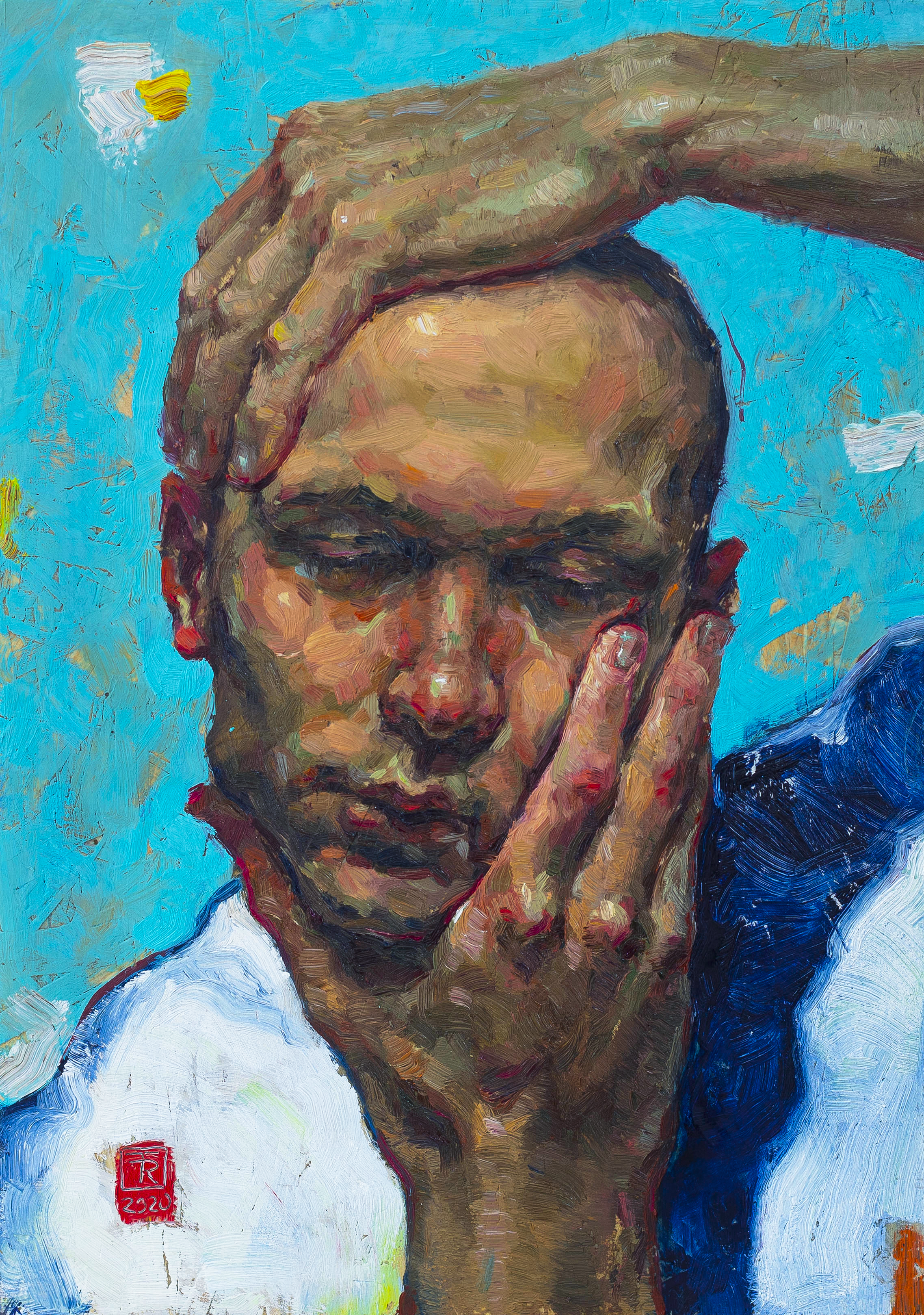IMN #11 — Tania Rivilis

It's Monday Night #11
Tonight, let’s share thoughts about @tania_rivilis' work.
Tania returns to the old project of portraiture, its oldest dream: to transform a real person into a figure that captures its presence.
Today, it has become difficult to say it out loud without giggling. But she takes each of her portraits seriously with a rigour that is almost anachronistic.
In modern art, it is often said (I am caricaturing) that the portrait is a place of temporary academism - the «youth» of a painter - or of experimentation and diversion - painters prove their virtuosity by desecrating or deconstructing the portrait as a genre.
More rarely, the portrait is an end in itself: to represent someone, their form, their singular way of being.
@tania_rivilis's portraits do not cheat. They are neither an exercise in style nor a pretext to prove the originality of an aesthetic sensibility.
She is determined to inhabit the portrait and to deploy her art there without any irony.
Any portrait stands on a point of balance between idolatry that threatens to destroy painter's art and artist's aggressiveness that disfigures what they give figure to.
On the one hand, the enigmatic presence of the model silences the powers of painting; on the other hand, the form of the model dislocates itself under the ferocious assaults of the painter. Portraiture is a dangerous business.
Great painters are people who know how to take and how to give back what they have taken. Sorry for these nocturnal generalities.
Let's look at Tania's portraits.
After long moments of wandering among them, I have some simple impressions. I leave them to their mess - as they come back to me as I write this review.
Tania prefers duets. Not only because she paints a lot of duets, but because each of her characters - even when alone - is haunted by the presence of another who is not there.
Tania prefers two to one, and she knows how to find duality in all her subjects.
What Tania paints is not an individual as an autonomous or independent entity, it's the reality of a link or an attachment between two beings.
It's something concrete. It's not the idea or concept of a bond (mother/son; lovers; friends; etc.), it's the flesh of a relationship.
It is the uncountable sum of gestures which make that a being tends towards another.
There is, in the painting of Tania, omnipresence of the tact and the contact. Characters touch each other and themselves when they are alone.
It is first of all by the sense of touch - so difficult to represent in painting - that a relationship can be created.
They look at each other with their whole body - this gives them a radiance or shimmer of their own.
Look at Tania's characters hands: exaggeratedly large, so expressive that they are almost in the center of paintings. Hands have or perhaps are a face.
Hands that caress, grasp, touch, point, press.
It's not uncommon for the texture of the skin to change a little on the surface of the hands - as if these hands belonged to someone else.
Hands are active but characters are idle: hands are busy while the bodies are available, left to themselves, waiting for an event, etc.
They are hands freed from work - from production, from manufacturing. They are returned to their essential property: touching and signing.
It is from these useless or unusable hands that what I would like to call a queer sensuality can emerge.
And these characters are not just anywhere: what Tania depicts are metropolitan bodies that have come together.
Backgrounds are often vague & blurred, but few «realistic» details place us in lair of any contemporary city: a smartphone, a haircut, a cardboard coffee cup,etc.
But this historical or sociological "concreteness" is sometimes coupled with a floral presence that smells a little old - a step towards kitsch that assumes the fantasy at work in the representation of a model.
We could add that the extreme modernity of these portraits and that they have integrated the aesthetic codes of the selfie: framing, posture, look, head carriage, etc.
It is, as I say, a return to the old, beautiful ambition of the portrait - to show the soul of an individual - but partly filtered by the norms of the Instagram image that she appropriates in a playful way.
The beauty of these duets is that they represent a relationship between equals. Tania pays attention to both what is given and what is received.
She highlights nuances that thwart stereotypes and false identities - but without putting her painting at the service of an ideology.
Actually, I find in Tania's painting a frontal refusal of abstraction or theorization.
What interests her is a warmth, an energy, an embodied connection that cannot be captured under this or that category of social life.
To do this, she combines color work bordering on Fauvism, borrows from Mannerism for its bizarre distortion of the human form, and brings each portrait to a level of intensity or incandescence that comes from an expressionist approach to painting.
But who cares?
P.S.: all @tania_rivilis's characters have light eyes, even when their eyes are black or closed.